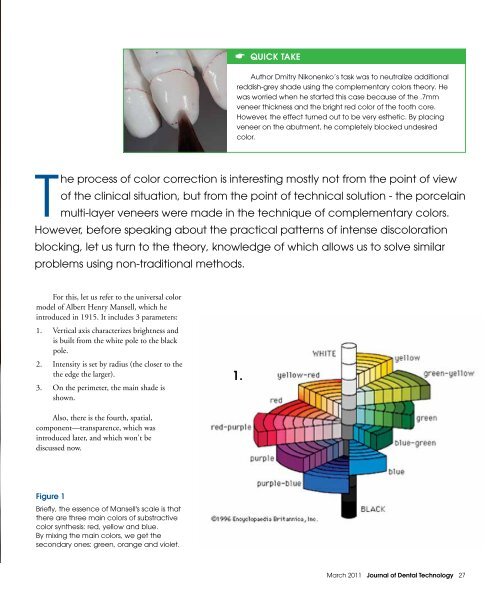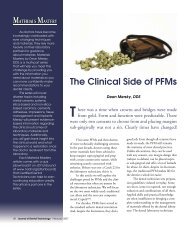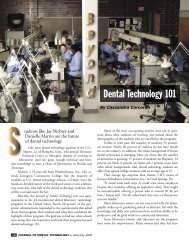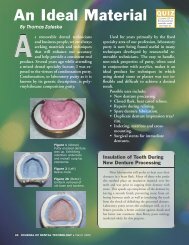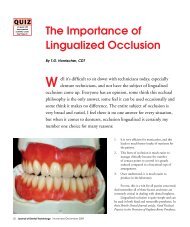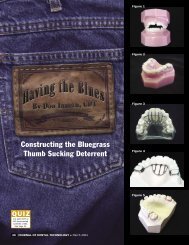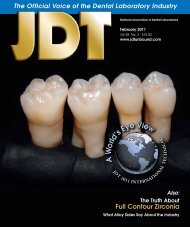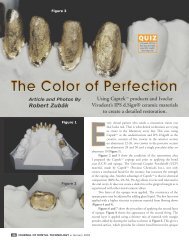Color Correction - JDT Unbound
Color Correction - JDT Unbound
Color Correction - JDT Unbound
- No tags were found...
Create successful ePaper yourself
Turn your PDF publications into a flip-book with our unique Google optimized e-Paper software.
☛ quick takeAuthor Dmitry Nikonenko’s task was to neutralize additionalreddish-grey shade using the complementary colors theory. Hewas worried when he started this case because of the .7mmveneer thickness and the bright red color of the tooth core.However, the effect turned out to be very esthetic. By placingveneer on the abutment, he completely blocked undesiredcolor.The process of color correction is interesting mostly not from the point of viewof the clinical situation, but from the point of technical solution - the porcelainmulti-layer veneers were made in the technique of complementary colors.However, before speaking about the practical patterns of intense discolorationblocking, let us turn to the theory, knowledge of which allows us to solve similarproblems using non-traditional methods.For this, let us refer to the universal colormodel of Albert Henry Mansell, which heintroduced in 1915. It includes 3 parameters:1. Vertical axis characterizes brightness andis built from the white pole to the blackpole.2. Intensity is set by radius (the closer to thethe edge the larger).3. On the perimeter, the main shade isshown.1.Also, there is the fourth, spatial,component—transparence, which wasintroduced later, and which won't bediscussed now.Figure 1Briefly, the essence of Mansell's scale is thatthere are three main colors of substractivecolor synthesis: red, yellow and blue.By mixing the main colors, we get thesecondary ones: green, orange and violet.March 2011 Journal of Dental Technology 27


